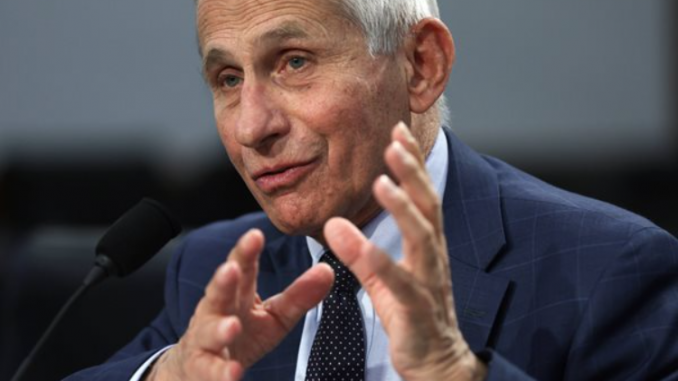
The National Institutes of Health last year gave out $30 billion worth of government grants to nearly 56,000 contractors.
According to a report from Open The Books’ Adam Andrzejewski, despite a large portion of taxpayer money going out to fund research, an investigation revealed that a large influx of cash had come back to the NIH and individual NIH scientists in the form of royalty payments from third parties. “(T)hink pharmaceutical companies” the report said.
Andrzejewski’s investigation revealed that from 2010 to 2020, third parties paid an estimated $350 million back to the agency and its scientists. The third parties were credited as co-inventors. And because the payments enrich the agency or its scientists, the donations could be construed as a potential conflict of interest requiring disclosure.
The report details that the disclosure of payments from September 2009 to September 2014 showed that nearly 1,700 NIH scientists received more than 22,100 royalty payments totaling nearly $134 million. The revelation came from a federal lawsuit between Open The Books and the NIH, indicating that the agency has held onto 3,000 pages of line-by-line royalties since 2009. But so far, only 1,200 pages have been produced. The other 1,800 pages would detail the agency’s royalties from 2015 to 2020.
Most of the NIH documents are heavily redacted and point only to the number of payments scientists received, as well as the aggregate dollar amount per NIH agency.
Agency officials receiving royalties include:
- Dr. Anthony Fauci, director of the National Institute of Allergy and Infectious Diseases (NIAID), whose 2021 taxpayer-funded salary was $456,028. He received 23 royalty payments.
- Dr. Francis Collins, the agency’s head from 2009 to 2021, whose 2021 taxpayer-funded salary was $203,500. He received 14 royalty payments.
- Dr. H. Clifford Lane, Fauci’s deputy at the NIAID, whose 2021 taxpayer-funded salary was $325,287. He received eight payments.
The above-mentioned payments include the times a third party paid an official, but the actual dollar amount per transaction has since been deleted or redacted.
Andrzejewski wrote:
“1. NIH defied the federal Freedom of Information Act law and refused to even acknowledge our open records request for the royalty payments. We filed our FOIA last September.
2. NIH used expensive taxpayer-funded litigation to slow-walk royalty disclosures (releasing the oldest royalties first). Although the agency admits to holding 3,000 pages, it will take ten months to produce them (300 pages per month). With Judicial Watch as our lawyers, we sued NIH in federal court last October.
3. NIH is heavily redacting key information on the royalty payments. For example, the agency erased 1. the payment amount, and, 2. who paid it! This makes the court-mandated production virtually worthless, despite our use of the latest forensic auditing tools.
“NIH is essentially telling you, the taxpayer, to pay up and shut up. They’ll run things. They have forgotten that they work on behalf of the American people,” Andrzejewski said.
On Wednesday, Rep. John Moolenar, R-Mich., asked Acting NIH Director Lawrence Tabak, during an appropriations committee hearing if there was a “conflict of interest” regarding the NIH and its agencies receiving royalty payments and if the public could trust the institution. Tabak admitted that NIH royalty payments have the “appearance” of a conflict of interest.
Via Newsmax
